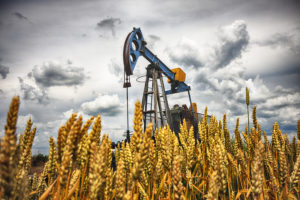 From February 2010 to February 2013, onshore oil production (including the production of crude oil and liquid hydrocarbons called “lease condensate”) within the Lower 48 States increased by 64 percent, driven largely by horizontal drilling and hydraulic fracturing (fracking).
From February 2010 to February 2013, onshore oil production (including the production of crude oil and liquid hydrocarbons called “lease condensate”) within the Lower 48 States increased by 64 percent, driven largely by horizontal drilling and hydraulic fracturing (fracking).
Seven states achieved particularly high increases: North Dakota, 198 percent; Texas, 105 percent; Colorado, 64 percent; Oklahoma, 51 percent; New Mexico, 46 percent; Utah, 45 percent; and Wyoming, 23 percent.
Natural gas production also increased. Shale wells made possible by fracking now account for more than 30 percent of total gas produced in the United States.
From 2009 to 2011, the number of shale wells in the United States increased from 5,531 to 10,173. From 2010 to 2011, shale drilling expenditures increased by 87.6 percent, totalling $65.5 billion.
In an April 2013 report, Hazem Arafa, the Director of Statistics for The American Petroleum Institute (API), states that "Shale drilling . . . now accounts for an estimated 23 percent of all wells drilled in the United States."
The North American shale revolution continues to radically expand domestic energy production as businesses invest more in the practices and technologies that make it possible. Kudos to those who, through their commitment to technological innovation and the pursuit of profit, have advanced and continue advancing this life-serving industry.
Like this post? Join our mailing list to receive our weekly digest. And for in-depth commentary from an Objectivist perspective, subscribe to our quarterly journal, The Objective Standard.
Related:
- Vindicating Capitalism: The Real History of the Standard Oil Company
- Recognition of Property Rights is the Key to Bakken Development


![[TEST] The Objective Standard](https://test.theobjectivestandard.com/wp-content/uploads/2017/10/logo.png)








